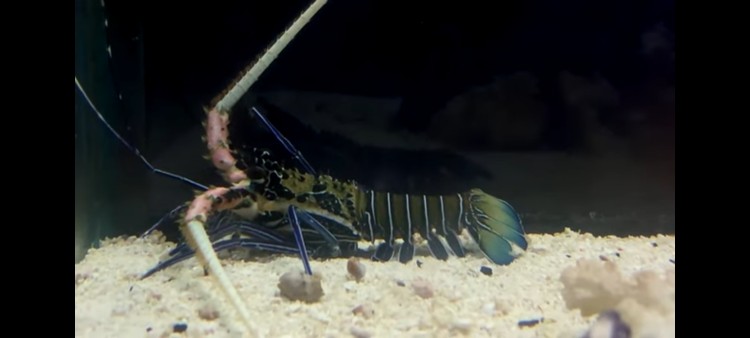All About the Blue Spiny Lobster
- Nov 29, 2021
- Anshika Mishra
- 1627 0 0

The Blue Spiny Lobster is an amazing addition to any reef tank, but you need to follow a few specific things to keep this amazing creature healthy. We will be covering all of it in this article:
Prices: You will normally spend about $60 to get one of these and up from them, depending upon how big they are. They are expensive invertebrates to get into your tank.
Tank Size: You eventually need a 120-gallon tank because they get huge. Sometimes, you might need a bigger upgrade than that because they can get massive by the end of their life span.
Care Level: It is super easy. They are great beginner creatures. But, if you want a Lobster in your tank, then they are one of the best ones to get.
Temperament: They are semi-aggressive. As they get larger, they will be more dominant over the fishes and corals. So, as they get more accustomed to the tank, you will need to watch out.
Reef Safe: With Caution. They chase smaller fishes and inverts, in the haze of which they might end up hurting your corals.
Origin: Indonesia
Water Parameter
- Temperature: 72-78 F
- dKH: 8-12
- pH: 8.1-8.4
- Salinity: 1.023-1.025
With this lobster in the tank, you have to dose your tank with plenty of calcium, especially during the molding cycle. The calcium will help it build scales big and strong.
Make sure you never dose copper in their tank; they might not survive it. If there is an outbreak, make sure to get them out before the dosing.
Acclimation: They need to be acclimated very slow. Judge double the amount of time you spend acclimating your fish with these Lobsters. They are very sensitive to changes in water and salinity.
Appearance
Maximum Size: They can get over a foot-long and evermore. So, it would help if you had plenty of room for them to swim around.
Colors: Their beautiful color is what lures most people into buying this Lobster. They have blue and yellow coloration on their body with gigantic tentacles in front of them.
Diet
They are an omnivore. They are big-time scavengers. You can also spot feed them if you want to add some Mysis into its cave. When he is scavenging, he is looking for anything like leftover food, algae, debris, etc.
Compatibility
You can have multiple of these lobsters in a tank, but you want to make sure that they have enough room to scavenge.
They do great in fish-only tanks with live rocks. In this kind, you definitely don't want very aggressive predators like puffers and triggers because these fishes can see the lobster as a snack.
Substrate
You want to keep this Lobster in a sand substrate with lots of caves build for them to hide in and be comfortable. But, most of the time, they are in the tank poking their head out; you can only see their tentacles. So, it would help if you had big caves for them to get in and scavenge.
They are known to make locus-like sounds, so don't be frightened when you hear that. They will do it when introduced in the tank, and when you catch them, adn put them back. They are fun to watch as they dance in those tentacles while they scavenge.







About author